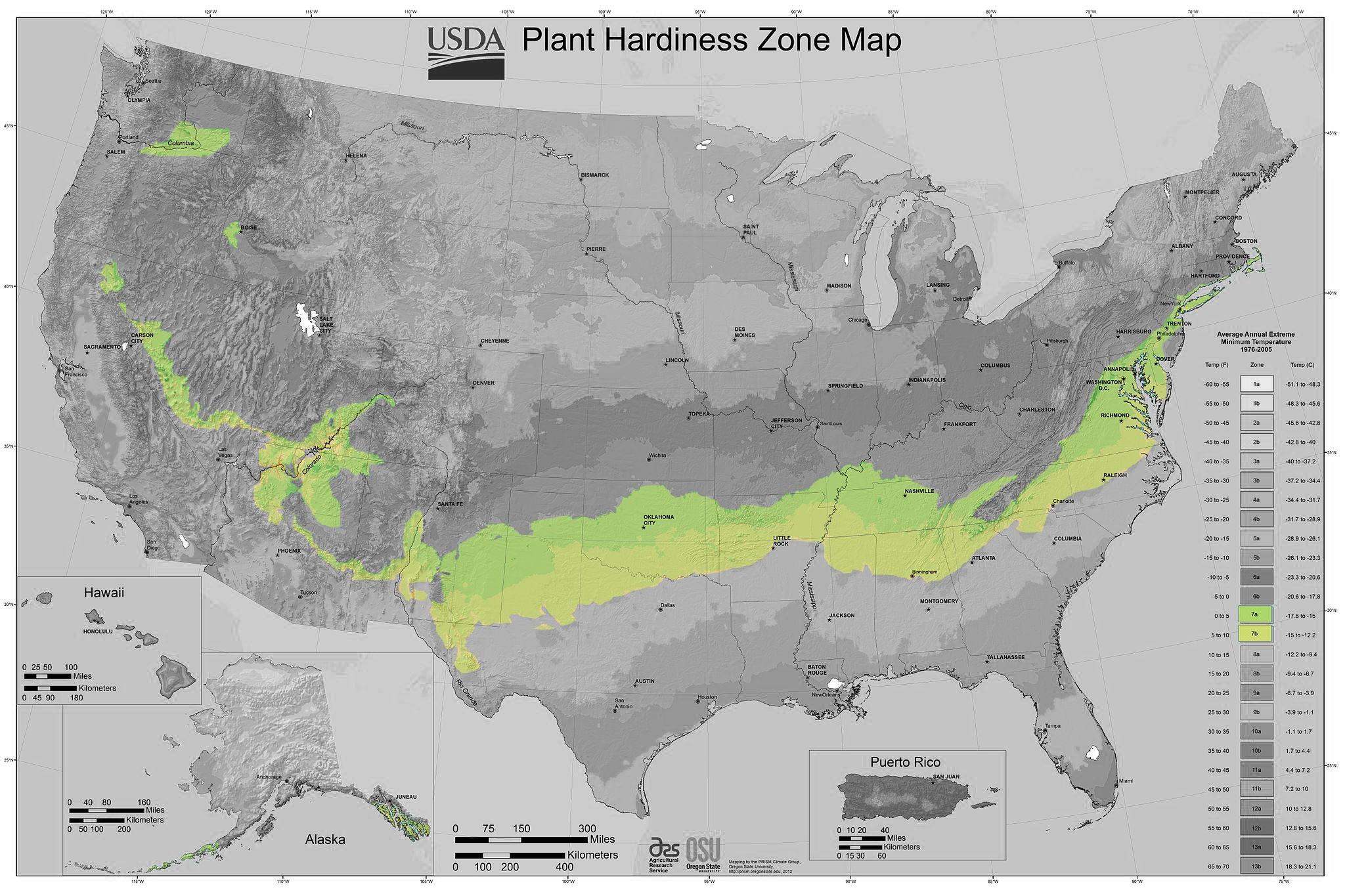
USDA Heardiness Zone 7
USDA Hardiness Zone 7 is a geographic area defined by the USDA (United States Department of Agriculture) to assist gardeners and growers in understanding which plants are most likely to thrive in their specific location. This zone is determined based on the average annual minimum winter temperature, divided into 10-degree Fahrenheit zones.
In Zone 7, the average annual extreme minimum temperature ranges from 0 to 10 degrees Fahrenheit. This zone covers parts of several states in the United States, including northern Texas, Oklahoma, Arkansas, Tennessee, North Carolina, and stretches up into the mid-Atlantic and Pacific Northwest regions.
The growing season in Zone 7 is relatively long, typically extending from early spring (March) through late fall (November), giving gardeners ample time to enjoy a variety of plants.
A diverse selection of plants can thrive in Zone 7, including many perennials, annuals, shrubs, and trees. Examples of plants suitable for this zone include roses, hydrangeas, azaleas, rhododendrons, and dogwoods. Many fruit trees, such as apple, cherry, and peach, also do well in this zone.
When choosing plants for Zone 7, consider not only their hardiness rating but also other critical factors such as soil type, sun exposure, and water requirements. Keep in mind that the USDA zone information should serve as a guide, not a guarantee, as other local conditions (like microclimates) can impact plant survivability.



